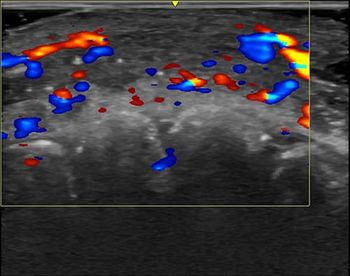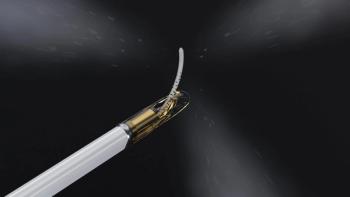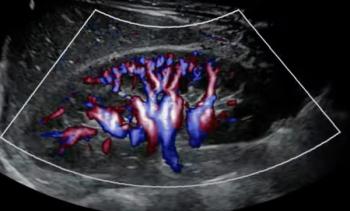Chest CT Study Shows Higher Emphysema Risk from Combination of Marijuana and Cigarette Smoking
People who smoke marijuana and cigarettes have 12 times the risk for centrilobular emphysema than non-smokers, according to new computed tomography (CT) research presented at the annual Radiological Society of North America (RSNA) conference.
Emerging computed tomography (CT) research suggests that marijuana smoking is associated with significantly elevated risks for centrilobular and paraseptal emphysema.
In a prospective multicenter study presented at the annual Radiological Society of North America (RSNA) conference in Chicago, researchers assessed and compared chest CT findings from cigarette smokers, regular marijuana smokers (four times a month and at least a two-year history of marijuana use), people who smoke marijuana and cigarettes, and non-smokers.
The researchers found that centrilobular emphysema, which involves damage to air sacs in the lungs, was 12 times more likely for people who smoke marijuana and cigarettes in comparison to non-smokers. People who only smoked marijuana had five- to seven-fold higher risks for paraseptal emphysema in contrast to non-smokers, according to the study authors.
“With our study, we show that there are physical effects of marijuana smoking on the lungs and that cigarette smoking and marijuana smoking may have a combined damaging effect on the lungs,” noted study co-author Jessie Kang, M.D., a cardiothoracic radiologist and assistant professor in the Department of Diagnostic Radiology at Dalhousie University in Halifax, Nova Scotia, Canada.
The study authors also found that bronchial wall thickening, which can lead to respiratory infection, scarring and further damage to airways, was four times more likely for people who smoked marijuana and cigarettes in comparison to non-smokers.
“The association between (marijuana) and smoking with bronchial wall thickening is significant, but interestingly, association with (marijuana) only and (cigarette) smoking only with bronchial wall thickening was not, suggesting that the combination of cigarette smoking and (marijuana) smoking may have a synergistic role on the lung/airways,” suggested Dr. Kang and her co-authors.
While there is a common perception that marijuana smoking is not as harmful as cigarette smoking, Dr. Kang said further research is essential to evaluate the long-term impact of marijuana smoking.
“More research needs to be done in this area, so the public can make an informed decision on their recreational usage of marijuana,” added Dr. Kang.
Newsletter
Stay at the forefront of radiology with the Diagnostic Imaging newsletter, delivering the latest news, clinical insights, and imaging advancements for today’s radiologists.





























